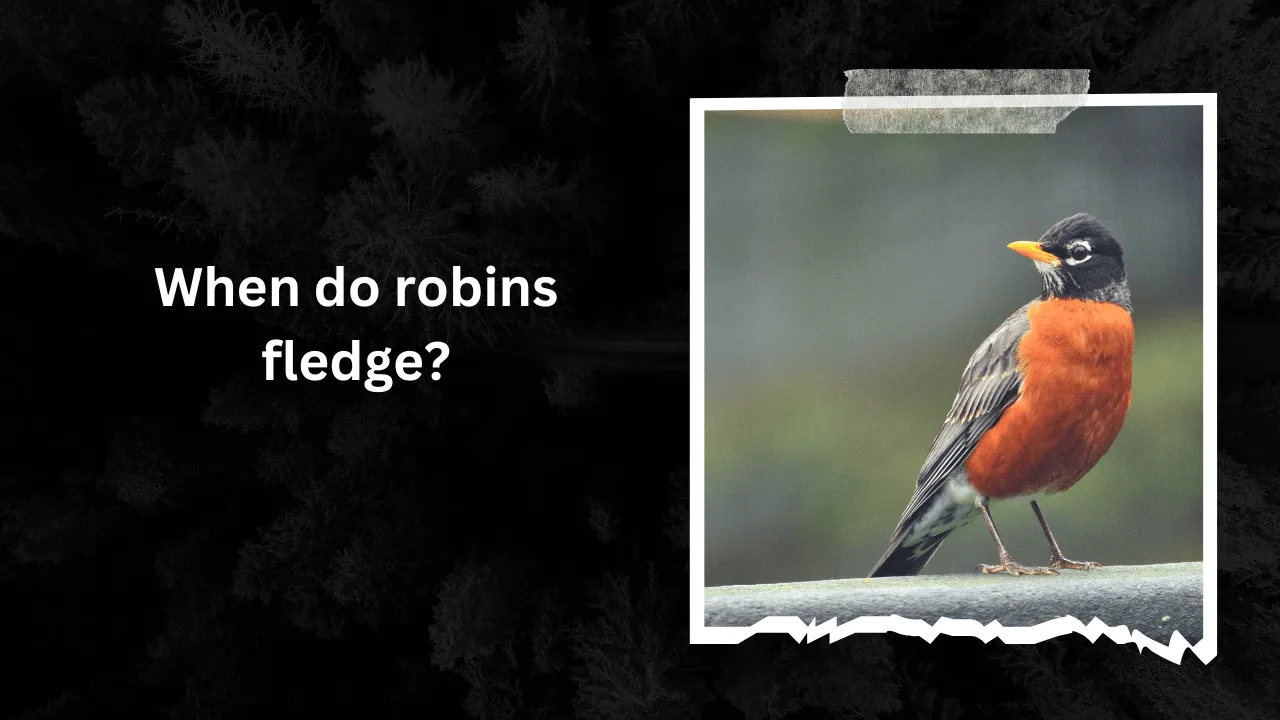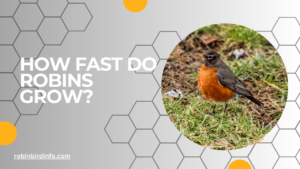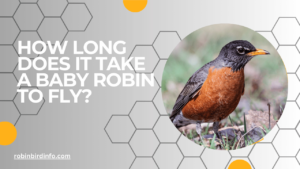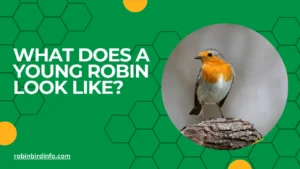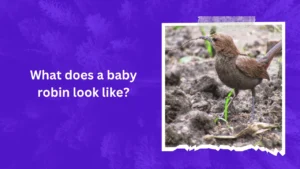Ever peeked into a Robin’s nest, captivated by the sight of those fuzzy, wide-eyed chicks?
It’s a scene straight out of a nature documentary – a testament to the wonder of new life. But have you ever wondered when these adorable fluff balls actually take the plunge and leave the nest?
It’s a crucial stage in their development, a transition from complete dependence on their parents to venturing out into the big, wide world.
Understanding when Robins fledge isn’t just about satisfying our curiosity (although, who wouldn’t want to know!). It sheds light on the fascinating process of bird development and the challenges these little ones face as they learn to fly and fend for themselves.
This blog post delves deeper into the intriguing world of Robin fledglings. We’ll explore the factors that influence the timing of their first flight, the challenges they encounter as they take to the skies, and the crucial role their parents play in their survival.
So, grab a cup of coffee, settle in, and get ready to witness the extraordinary journey of a Robin chick, from a helpless nestling to a soaring bird!
Contents
- 1 Nestling Stage
- 2 Fledging Process
- 3 Factors Influencing Fledging Time
- 4 Post-Fledging Care
- 5 Conservation Implications
- 6 Conclusion
- 7 FAQ’s
- 7.0.1 What are the signs that a Robin is about to fledge?
- 7.0.2 What should I do if I find a fledgling Robin on the ground?
- 7.0.3 How can I help fledgling Robins?
- 7.0.4 What are the common threats to fledgling Robins?
- 7.0.5 How can I protect fledgling Robins from predators?
- 7.0.6 How can I support Robin conservation?
Nestling Stage
A newly hatched Robin chick is a small, vulnerable creature. It is naked, blind, and completely dependent on its parents for survival.
Over the next few weeks, the nestling undergoes rapid growth and development. Its feathers begin to grow, providing warmth and insulation. As the feathers develop, the nestling becomes more mobile and starts to explore the nest.
Both parent Robins work tirelessly to feed and protect their young. They bring a variety of insects, worms, and berries to the nest. The parents regurgitate this food into the mouths of the hungry nestlings.
The nutritional value of this food is crucial for the nestling’s growth and development.
Fledging Process
As the nestlings grow, they become more active and begin to flutter their wings. They may also perch on the edge of the nest, practicing their balance and coordination. Once the nestlings are strong enough to fly, they will fledge, leaving the nest for the first time.
The first flight is a risky endeavor for young Robins. They may fall short of their target or be attacked by predators. The parents continue to monitor and protect their fledglings, providing food and guidance.
Factors Influencing Fledging Time
Several factors can influence the timing of fledging:
- Weather Conditions: Adverse weather conditions, such as cold temperatures or heavy rain, can delay fledging.
- Food Availability: If food is scarce, the nestlings may take longer to grow and develop.
- Predation Risk: The threat of predation can influence the timing of fledging. If predators are present, parents may encourage their young to fledge earlier to reduce the risk of being attacked.
Post-Fledging Care
Even after fledging, young Robins continue to rely on their parents for a short period. The parents may continue to feed and protect their fledglings, teaching them how to find food and avoid predators.
Fledgling Robins gradually become more independent, learning to forage for themselves and navigate their environment. However, it may take several weeks or even months for them to become fully self-sufficient.
Conservation Implications
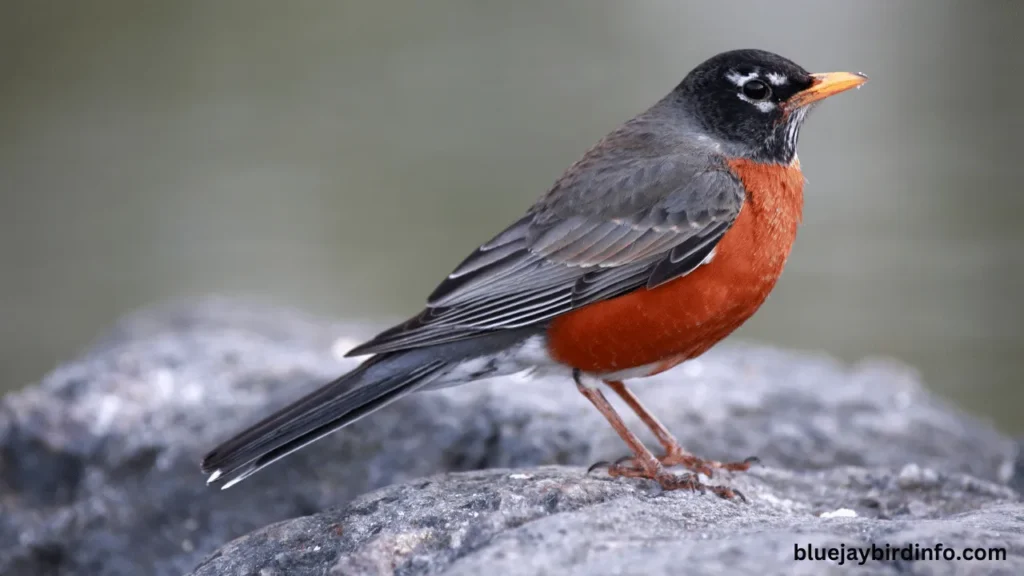
Habitat loss is a major threat to Robin populations. The loss of forests and woodlands can reduce the availability of suitable nesting and foraging sites.
The use of pesticides can also negatively impact Robin populations by reducing the availability of insects, which are a crucial food source for both adult and young Robins.
Climate change can alter the timing of breeding seasons and the availability of food resources, potentially impacting Robin populations.
Conclusion
The journey from nestling to fledgling is a critical period in a Robin’s life. By understanding the factors that influence the timing of fledging and the challenges faced by young Robins, we can appreciate the incredible resilience of these birds.
We can also take steps to protect Robin populations by conserving their habitats, reducing pesticide use, and creating bird-friendly environments. By doing so, we can ensure the continued survival of these beloved birds.
FAQ’s
What are the signs that a Robin is about to fledge?
Signs of impending fledging include increased activity in the nest, fluttering wings, and perching on the edge of the nest.
What should I do if I find a fledgling Robin on the ground?
If you find a healthy fledgling Robin on the ground, it’s best to leave it alone. The parents are likely monitoring it and will continue to care for it. However, if the bird appears injured or is in immediate danger, contact a wildlife rehabilitator for assistance.
How can I help fledgling Robins?
You can help fledgling Robins by creating a bird-friendly environment in your yard. Provide a variety of food sources, such as birdseed, mealworms, and fresh fruit. You can also plant native plants, offer clean water sources, and avoid using harmful pesticides.
What are the common threats to fledgling Robins?
Fledgling Robins face various threats, including predation by cats, hawks, and other birds of prey. They may also be injured by collisions with windows or other obstacles.
How can I protect fledgling Robins from predators?
To protect fledgling Robins from predators, you can install physical barriers, such as bird netting or cages, around nesting sites. Additionally, you can deter predators by using scare tactics, like reflective tape or scarecrows.
How can I support Robin conservation?
You can support Robin conservation by participating in citizen science projects, donating to conservation organizations, and creating bird-friendly habitats in your own backyard. By understanding the life cycle of Robins and the challenges they face, we can take steps to protect these beloved birds and ensure their continued survival.

